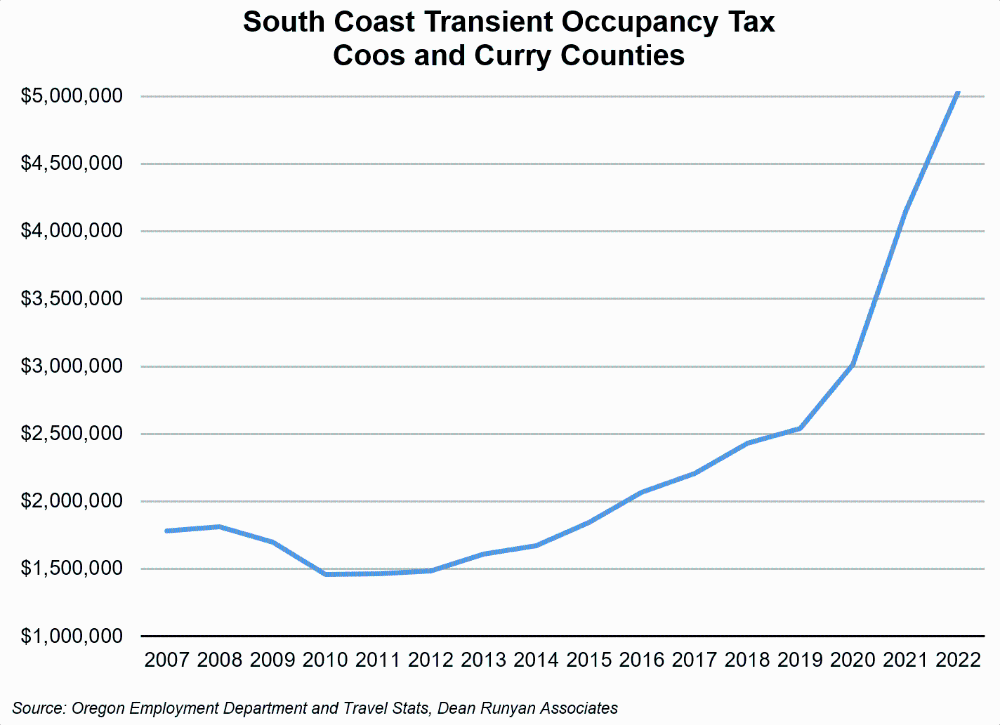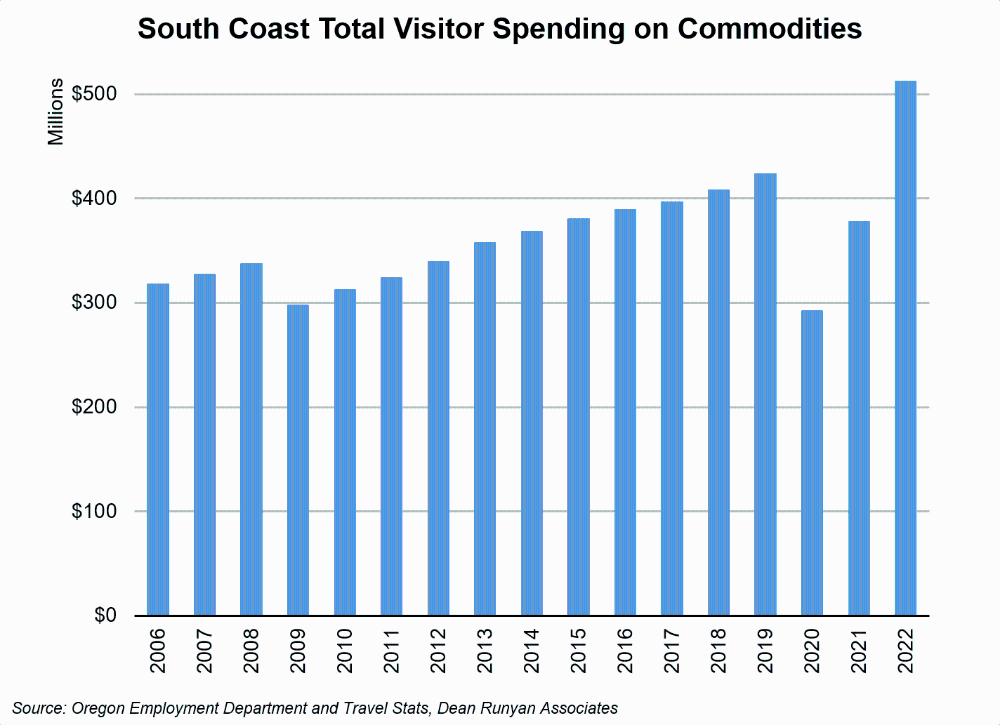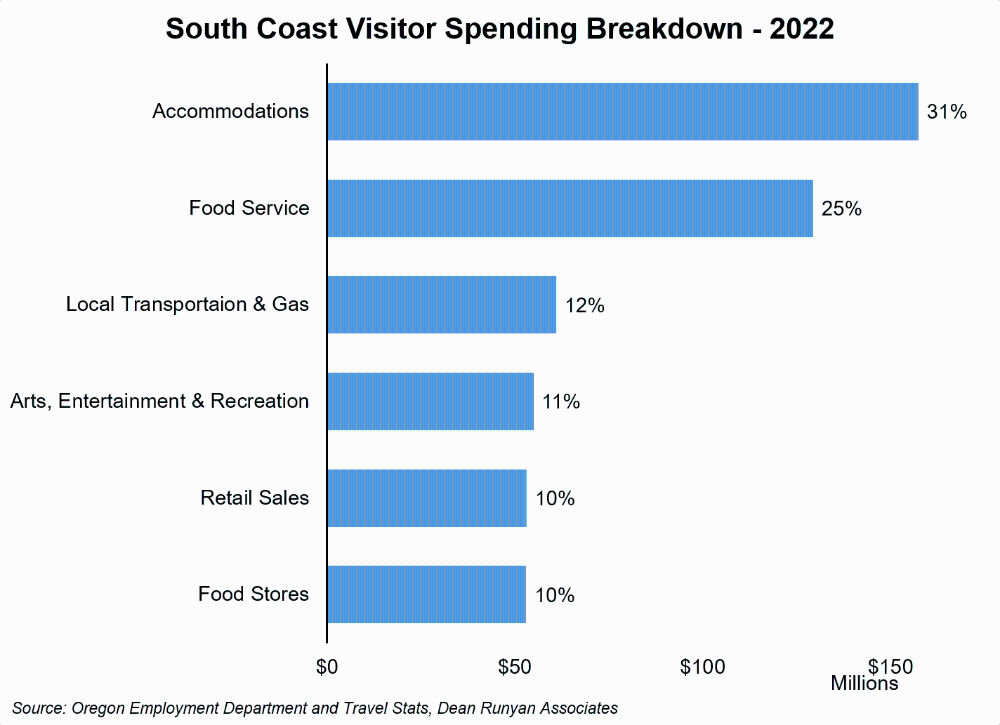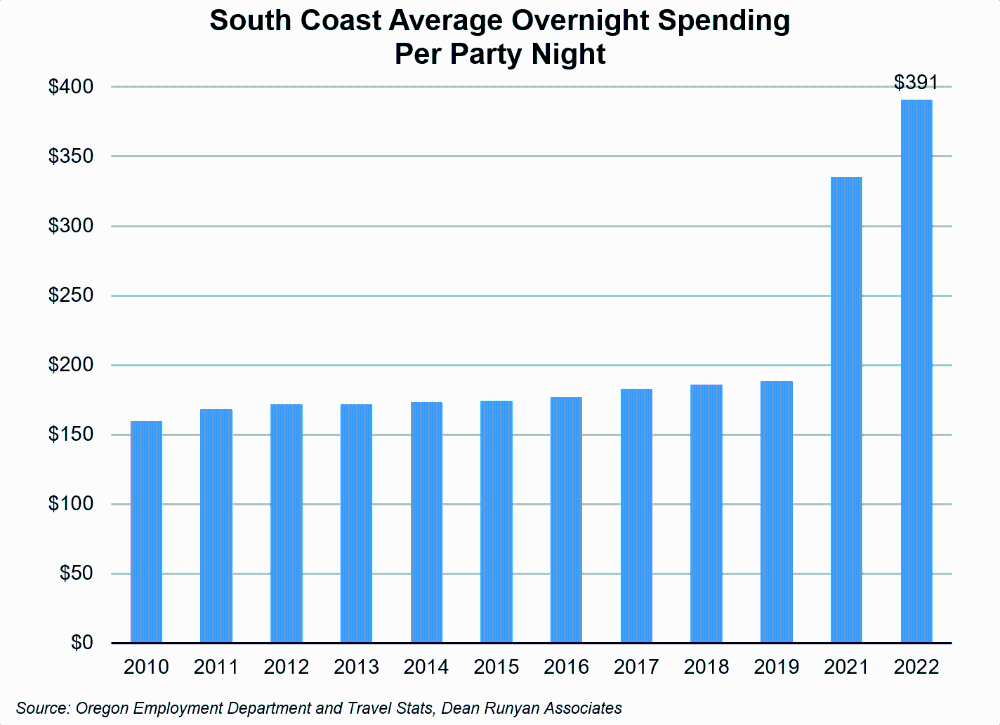The Economic Footprint of a South Coast Tourist
July 17, 2023Oregon’s South Coast is uniquely located in the Southwest corner of the state, offering scenic rivers, less crowded beaches, and a plethora of trails. According to the travel impact numbers, Oregon’s South Coast is a rapidly growing tourism hotspot. This article looks at overnight visitors, visitor spending, and the average overnight cost for the South Coast region.
Overnight Visitors Came Roaring Back to the Coast
One metric to track tourism health for an area is Transient Occupancy Tax receipts (TOT). This tax, often referred to as lodging tax, is collected on the sale/rental of a room at any lodging establishment such as a hotel, motel, bed and breakfast, short-term and long-term homestays, or at a campground site or RV park. It is a direct means for jurisdictions to collect revenue from travelers or tourists. Tracking TOT receipts provides a basis for evaluating both annual travel trends and the geographic distribution of travel activity in the state.
The uncertainty that the pandemic ushered in along with travel restrictions and business closures significantly dampened overnight travelers in the regions surrounding the South Coast. Coos and Curry counties were the exception, and the lodging taxes collected at the start of the pandemic increased. Coos County’s total lodging tax increased by 4% from 2019 to 2020 and Curry County’s by 47%. The South Coast’s lodging tax saw substantial gains during the main COVID period from 2019 to 2022. Lodging taxes increased from $2.5 million to $5 million (+98%). The graph below shows total lodging taxes over time.
To view additional details and the varying lodging rates for jurisdictions, visit Travel Oregon’s Lodging Tax.

Visitor Spending on Commodities
Visitor spending is direct spending made by visitors on commodities in a destination. The commodity types included in this definition are: (1) accommodations; (2) food service; (3) food stores; (4) local transportation and gas; (4) arts, entertainment, and recreation; and (5) retail sales.
The South Coast normally sees year-over-year growth in visitor spending, only experiencing brief declines during economic contractions. From 2008 to 2009 visitor spending declined by 12%, then saw uninterrupted growth until 2020. From 2019 to 2020 visitor spending declined by 31%. Two years after the economic lockdown of 2020, visitor spending reached a new all-time high of about $512 million.

The $512 million generated from visitor spending in 2022 can be broken up by commodity types. Visitors spent the most on accommodations, which accounted for 31% of total spending. Food service, which includes breweries, wineries, and distilleries, accounted for another 25%. The full breakdown of visitor spending follows below.

How Much is an Average Overnight Stay in the South Coast?
Dean Runyan tracks the average expenditure an overnight party can expect to pay. While the exact number will vary depending on party size, length of stay, and choice of accommodation, this number is meant to serve as a baseline. The average overnight stay in the South Coast has gone up year-over-year, and saw a large increase from 2019 to 2021. In 2022, the average party spent $391 a night. The price of an average night has gone up 78% since 2019.

To read more about the Economic Impact of Travel in Oregon, the full report is available here, and for additional details on the South Coast refer to page 49. An interactive dashboard is also available to view different travel related metrics on Travel Oregon’s Annual Economic Impacts Dashboard.